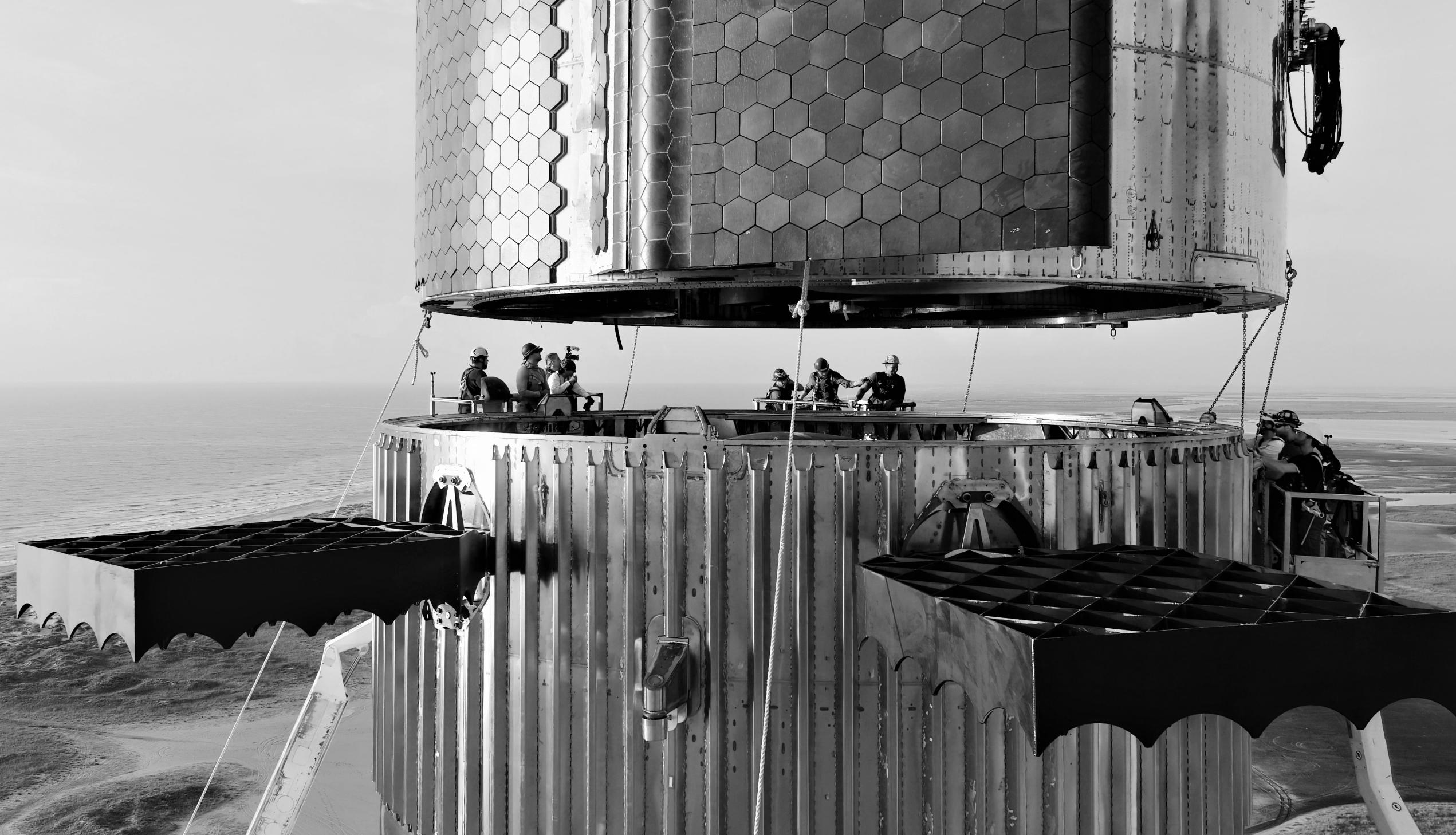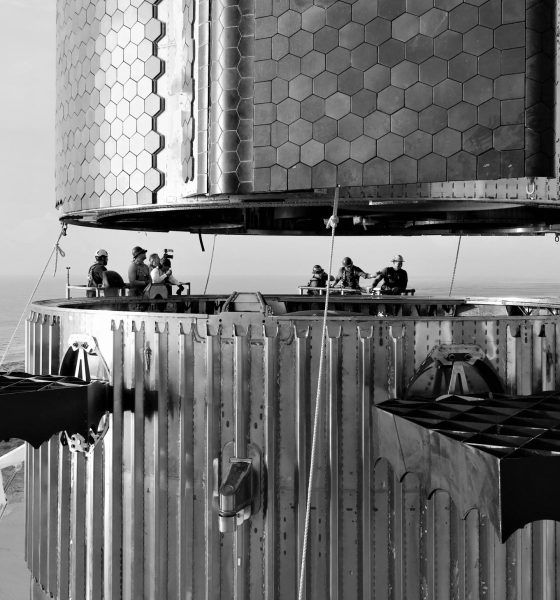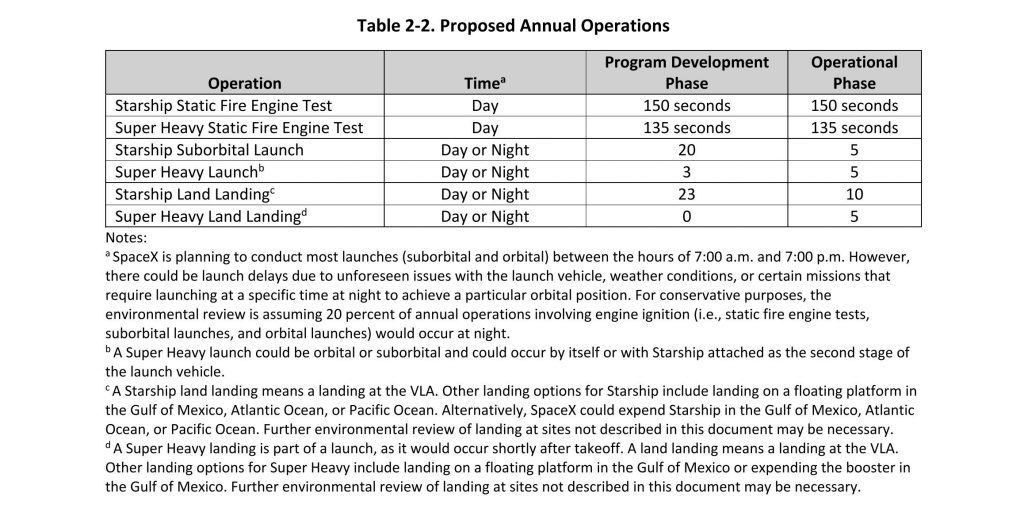

News
SpaceX’s orbital Starship launch debut may be pushed to 2022 by slow FAA reviews
In a rare sign of material progress, SpaceX and the FAA have finally released what is known as a draft environmental assessment (EA) of the company’s South Texas Starship launch plans.
Set to be the largest and most powerful rocket in spaceflight history when it first begins orbital launches, the process of acquiring permission to launch Starship and its Super Heavy booster out of the wetlands of the South Texas coast was never going to be easy. The Boca Chica site SpaceX ultimately settled on for its first private launch facilities – initially meant for Falcon 9 and Falcon Heavy but later dedicated to BFR (now Starship) – is simultaneously surrounded by sensitive coastal habitats populated by several threatened or endangered species and situated mere miles as the crow flies from a city whose temporary population oscillates from a few thousand to tens of thousands.
Reception and analysis of the draft and its timing have been mixed. On one hand, SpaceX’s draft EA – completed with oversight from the FAA and help from the US Fish and Wildlife Service (USFWS) – gives a number of reasons for optimism. In a sign that SpaceX is taking a pragmatic approach to the inevitable environmental review and launch license approval hurdles standing in front of orbital South Texas Starship launches, the company has actually pursued what is known as a “programmatic environmental assessment” (PEA).
Most importantly, that means that SpaceX’s Starbase PEA – if approved – will be more like a foundation or stepping stone that should make it easier to start small and methodically expand the scope and nature of the company’s plans for Boca Chica. Along those lines, as part of Starbase’s first dedicated environmental assessment, SpaceX has proposed a maximum of 23 flight operations annually while Starship is still in the development phase, including up to 20 suborbital Starship test flights and 3 orbital launches (or Super Heavy hops). Once SpaceX has worked out enough kinks for slightly more confident Starship operations, the company would enter an “operational phase” that would allow for as many as five suborbital Starship launches and five orbital Starship launches, as well as ship and booster landings back on land after all 10 possible launches.

In other words, SpaceX’s initial draft PEA is extremely conservative, requesting permission for what amounts to a bare minimum concept of operations for orbital Starship launches. At a maximum of 3-5 orbital launches per year, a PEA and subsequent launch license approved as-is would likely give SpaceX just enough slack to perform basic Earth orbit launches and no more than one or two orbital refilling tests per year. However, as an example, a five-launch maximum would almost entirely prevent SpaceX from launching Starship to Mars, the Moon, and maybe even high-energy Earth orbits without using all of its annual launch allotments on a single mission.
Perhaps most importantly, the draft PEA as proposed would unequivocally prevent SpaceX from performing the NASA Human Lander System (HLS) Moon landings it received an almost $3 billion contract to complete. Each HLS Starship Moon landing is expected to require anywhere from 10-16 launches to deliver a depot ship, HLS lander, and ~1200 tons of propellant to orbit. However, in terms of SpaceX’s prospects of developing Starship as quickly as possible, that’s actually a good thing. Above all else, SpaceX’s slimmed-down draft PEA should be far easier for the FAA to approve than a PEA pursuing permission for Starship’s ultimate ambitions – dozens to hundreds of launches annually – from the beginning. In theory, with this barebones PEA approved, SpaceX would then be able to build off the foundation with additional environmental assessments – like, for example, of expanding Starship’s maximum launch cadence.
Of course, SpaceX first needs the FAA turn this first draft PEA into a favorable environmental assessment (not a guarantee) before any of the above starts to matter. Based on the content of the draft itself and associated appendixes, SpaceX appears to have a decent shot at receiving a “finding of no significant impact (FONSI)” or “mitigated FONSI” determination. However, SpaceX began the process of creating that draft as far back as mid-2020, followed by an FAA announcement in November 2020. The implication is that the FAA managed to drag out a draft release process that some have estimated should have taken 3-4 months into an arduous 10-15 month ordeal.
Combined with the uphill battle it’s starting to look like SpaceX will have to wage for an orbital Starship launch license in South Texas, it’s looking increasingly likely that Starship, Super Heavy, and Starbase will be technically ready for orbital launch tests well before the FAA is ready to approve or license them. Barring delays, the public now has until mid-October to read and comment on SpaceX’s draft PEA, after which the FAA and SpaceX will review those comments and hopefully turn the draft into a completed review. Even if the FAA were to somehow take just two months to return a best-case FONSI, clearing Starbase of environmental launch hurdles, it’s hard to imagine that the agency could then turn around and approve an orbital Starship launch license – or even a one-off experimental permit – in the last few weeks of 2021.
Ultimately, that means that nothing short of a minor miracle is likely to prevent the FAA’s environmental review and licensing delays from directly delaying Starship’s orbital launch debut. There is at least a chance that Starship, Super Heavy, and Starbase’s orbital launch site wont be ready for orbital launches by the end of the year, but it’s increasingly difficult to imagine that all three won’t be proof tested, qualified, and ready for action just a month or two from now. For the time being, we’ll just have to wait and see where the cards fall.

News
Tesla aims to combat common Full Self-Driving problem with new patent
Tesla writes in the patent that its autonomous and semi-autonomous vehicles are heavily reliant on camera systems to navigate and interact with their environment.

Tesla is aiming to combat a common Full Self-Driving problem with a new patent.
One issue with Tesla’s vision-based approach is that sunlight glare can become a troublesome element of everyday travel. Full Self-Driving is certainly an amazing technology, but there are still things Tesla is aiming to figure out with its development.
Unfortunately, it is extremely difficult to get around this issue, and even humans need ways to combat it when they’re driving, as we commonly use sunglasses or sun visors to give us better visibility.
Cameras obviously do not have these ways to fight sunglare, but a new patent Tesla recently had published aims to fight this through a “glare shield.”
Tesla writes in the patent that its autonomous and semi-autonomous vehicles are heavily reliant on camera systems to navigate and interact with their environment.

The ability to see surroundings is crucial for accurate performance, and glare is one element of interference that has yet to be confronted.
Tesla described the patent, which will utilize “a textured surface composed of an array of micro-cones, or cone-shaped formations, which serve to scatter incident light in various directions, thereby reducing glare and improving camera vision.”

The patent was first spotted by Not a Tesla App.
The design of the micro-cones is the first element of the puzzle to fight the excess glare. The patent says they are “optimized in size, angle, and orientation to minimize Total Hemispherical Reflectance (THR) and reflection penalty, enhancing the camera’s ability to accurately interpret visual data.”
Additionally, there is an electromechanical system for dynamic orientation adjustment, which will allow the micro-cones to move based on the angle of external light sources.
This is not the only thing Tesla is mulling to resolve issues with sunlight glare, as it has also worked on two other ways to combat the problem. One thing the company has discussed is a direct photon count.
CEO Elon Musk said during the Q2 Earnings Call:
“We use an approach which is direct photon count. When you see a processed image, so the image that goes from the sort of photon counter — the silicon photon counter — that then goes through a digital signal processor or image signal processor, that’s normally what happens. And then the image that you see looks all washed out, because if you point the camera at the sun, the post-processing of the photon counting washes things out.”
Future Hardware iterations, like Hardware 5 and Hardware 6, could also integrate better solutions for the sunglare issue, such as neutral density filters or heated lenses, aiming to solve glare more effectively.
Elon Musk
Delaware Supreme Court reinstates Elon Musk’s 2018 Tesla CEO pay package
The unanimous decision criticized the prior total rescission as “improper and inequitable,” arguing that it left Musk uncompensated for six years of transformative leadership at Tesla.

The Delaware Supreme Court has overturned a lower court ruling, reinstating Elon Musk’s 2018 compensation package originally valued at $56 billion but now worth approximately $139 billion due to Tesla’s soaring stock price.
The unanimous decision criticized the prior total rescission as “improper and inequitable,” arguing that it left Musk uncompensated for six years of transformative leadership at Tesla. Musk quickly celebrated the outcome on X, stating that he felt “vindicated.” He also shared his gratitude to TSLA shareholders.
Delaware Supreme Court makes a decision
In a 49-page ruling Friday, the Delaware Supreme Court reversed Chancellor Kathaleen McCormick’s 2024 decision that voided the 2018 package over alleged board conflicts and inadequate shareholder disclosures. The high court acknowledged varying views on liability but agreed rescission was excessive, stating it “leaves Musk uncompensated for his time and efforts over a period of six years.”
The 2018 plan granted Musk options on about 304 million shares upon hitting aggressive milestones, all of which were achieved ahead of time. Shareholders overwhelmingly approved it initially in 2018 and ratified it once again in 2024 after the Delaware lower court struck it down. The case against Musk’s 2018 pay package was filed by plaintiff Richard Tornetta, who held just nine shares when the compensation plan was approved.
A hard-fought victory
As noted in a Reuters report, Tesla’s win avoids a potential $26 billion earnings hit from replacing the award at current prices. Tesla, now Texas-incorporated, had hedged with interim plans, including a November 2025 shareholder-approved package potentially worth $878 billion tied to Robotaxi and Optimus goals and other extremely aggressive operational milestones.
The saga surrounding Elon Musk’s 2018 pay package ultimately damaged Delaware’s corporate appeal, prompting a number of high-profile firms, such as Dropbox, Roblox, Trade Desk, and Coinbase, to follow Tesla’s exodus out of the state. What added more fuel to the issue was the fact that Tornetta’s legal team, following the lower court’s 2024 decision, demanded a fee request of more than $5.1 billion worth of TSLA stock, which was equal to an hourly rate of over $200,000.
Delaware Supreme Court Elon Musk 2018 Pay Package by Simon Alvarez
News
Tesla Cybercab tests are going on overdrive with production-ready units
Tesla is ramping its real-world tests of the Cybercab, with multiple sightings of the vehicle being reported across social media this week.

Tesla is ramping its real-world tests of the Cybercab, with multiple sightings of the autonomous two-seater being reported across social media this week. Based on videos of the vehicle that have been shared online, it appears that Cybercab tests are underway across multiple states.
Recent Cybercab sightings
Reports of Cybercab tests have ramped this week, with a vehicle that looked like a production-ready prototype being spotted at Apple’s Visitor Center in California. The vehicle in this sighting was interesting as it was equipped with a steering wheel. The vehicle also featured some changes to the design of its brake lights.
The Cybercab was also filmed testing at the Fremont factory’s test track, which also seemed to involve a vehicle that looked production-ready. This also seemed to be the case for a Cybercab that was spotted in Austin, Texas, which happened to be undergoing real-world tests. Overall, these sightings suggest that Cybercab testing is fully underway, and the vehicle is really moving towards production.
Production design all but finalized?
Recently, a near-production-ready Cybercab was showcased at Tesla’s Santana Row showroom in San Jose. The vehicle was equipped with frameless windows, dual windshield wipers, powered butterfly door struts, an extended front splitter, an updated lightbar, new wheel covers, and a license plate bracket. Interior updates include redesigned dash/door panels, refined seats with center cupholders, updated carpet, and what appeared to be improved legroom.
There seems to be a pretty good chance that the Cybercab’s design has been all but finalized, at least considering Elon Musk’s comments at the 2025 Annual Shareholder Meeting. During the event, Musk confirmed that the vehicle will enter production around April 2026, and its production targets will be quite ambitious.








